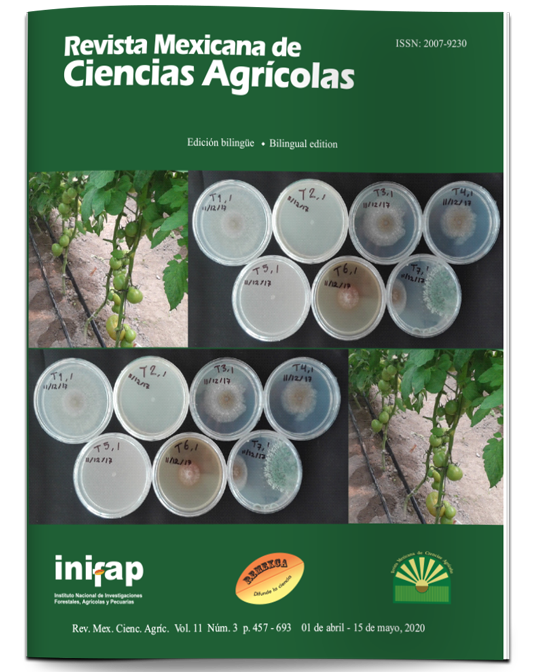Physico-chemical characterization and antioxidant content of Physalis fruits
DOI:
https://doi.org/10.29312/remexca.v11i3.2080Keywords:
Physalis peruviana, Physalis pubescens, storageAbstract
Physalis berries, from the Solanaceae family, have achieved wide acceptance worldwide due to the flavor of the fruit and its possible medicinal use. This study aimed to evaluate the antioxidant activity, the concentrations of vitamin C, phenolic compounds and sugars of fruits of two species of Physalis (Physalis pubescens L. and Physalis peruviana L.), as well as their variations during storage at two different temperatures. The Physalis was planted in the west of Santa Catarina. The fruits were harvested when the capsules were pale yellow in color and then divided into three groups: fresh, chilled, and frozen. The pH, total soluble solid, total soluble sugars, phenolic compounds, vitamin C and antioxidant activity were evaluated. The fresh fruits of both species presented better results for most of the parameters analyzed compared to the refrigerated and frozen fruits. Antioxidant activity was higher in fresh fruits for the two Physalis species, experiencing a decrease when conditioned at low temperatures. The antioxidant benefits and nutraceutical compounds are best exploited when the fruits are consumed fresh without any storage process at low temperatures.
Downloads
Published
How to Cite
Issue
Section
License
The authors who publish in Revista Mexicana de Ciencias Agrícolas accept the following conditions:
In accordance with copyright laws, Revista Mexicana de Ciencias Agrícolas recognizes and respects the authors’ moral right and ownership of property rights which will be transferred to the journal for dissemination in open access. Invariably, all the authors have to sign a letter of transfer of property rights and of originality of the article to Instituto Nacional de Investigaciones Forestales, Agrícolas y Pecuarias (INIFAP) [National Institute of Forestry, Agricultural and Livestock Research]. The author(s) must pay a fee for the reception of articles before proceeding to editorial review.
All the texts published by Revista Mexicana de Ciencias Agrícolas —with no exception— are distributed under a Creative Commons License Attribution-NonCommercial 4.0 International (CC BY-NC 4.0), which allows third parties to use the publication as long as the work’s authorship and its first publication in this journal are mentioned.
The author(s) can enter into independent and additional contractual agreements for the nonexclusive distribution of the version of the article published in Revista Mexicana de Ciencias Agrícolas (for example include it into an institutional repository or publish it in a book) as long as it is clearly and explicitly indicated that the work was published for the first time in Revista Mexicana de Ciencias Agrícolas.
For all the above, the authors shall send the Letter-transfer of Property Rights for the first publication duly filled in and signed by the author(s). This form must be sent as a PDF file to: revista_atm@yahoo.com.mx; cienciasagricola@inifap.gob.mx; remexca2017@gmail.
This work is licensed under a Creative Commons Attribution-Noncommercial 4.0 International license.



